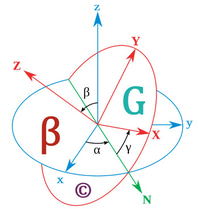Designing Electrical Systems for High-Rise Buildings: Challenges and Innovations
High-rise buildings are the epitome of modern urban development, showcasing architectural marvels and engineering expertise. As they continue to dominate skylines worldwide, the electrical systems powering these structures must be designed with precision, safety, and efficiency to meet their unique demands.
PROPERTY AND BUILDINGS
Engr. Benjamin V. Gonzales Jr.
1/28/20253 min read
Designing Electrical Systems for High-Rise Buildings: Challenges and Innovations
High-rise buildings are the epitome of modern urban development, showcasing architectural marvels and engineering expertise. As they continue to dominate skylines worldwide, the electrical systems powering these structures must be designed with precision, safety, and efficiency to meet their unique demands.
Key Considerations for High-Rise Electrical System Design
Power Distribution and Vertical Integration
High-rise buildings require robust power distribution systems to ensure reliable energy delivery across multiple floors. Key aspects include:
Medium Voltage (MV) Distribution: MV systems are often used to step down utility power to a lower voltage, minimizing power losses during vertical distribution.
Busbar Trunking Systems (BTS): These systems are ideal for high-rises due to their compactness, flexibility, and ability to handle high current loads.
Zoning and Substations: Electrical zoning ensures manageable power distribution by dividing the building into zones, each served by its own substation.
Backup Power and Redundancy
High-rise buildings, especially those housing commercial or residential spaces, require backup power systems to maintain critical operations during outages.
Diesel Generators: Strategically placed to provide emergency power, ensuring compliance with life safety standards.
Uninterruptible Power Supply (UPS): Essential for critical loads like elevators, fire systems, and IT infrastructure.
Paralleling Switchgear: Allows seamless transfer between utility and generator power, ensuring minimal disruption.
Energy Efficiency and Sustainability
Designing high-rise electrical systems with sustainability in mind is essential for reducing carbon footprints and operating costs.
Smart Metering and Energy Management Systems (EMS): Provide real-time monitoring of energy consumption to optimize usage.
Renewable Energy Integration: Solar panels, wind turbines, and battery storage systems can supplement the building’s energy needs.
Energy-Efficient Equipment: LED lighting, variable frequency drives (VFDs), and energy-efficient transformers reduce energy losses.
Electrical Safety and Compliance
High-rise buildings must adhere to stringent safety standards to protect occupants and infrastructure.
Fire Alarm and Detection Systems: Fully integrated with power supply systems to ensure reliability.
Grounding and Lightning Protection: Protect against electrical faults and lightning strikes, which are more frequent in tall structures.
Circuit Protection Devices: Ensure safe operation by preventing overloads and short circuits.
Vertical Transportation: A Vital Electrical Subsystem
Vertical transportation systems—elevators, escalators, and moving walkways—are essential to high-rise buildings, ensuring smooth movement of people and goods across multiple levels. Their electrical design must address performance, energy efficiency, and safety.
Power Requirements
Elevators and escalators require significant power, especially during peak usage. To ensure uninterrupted operation:
Dedicated Power Feeds: Separate feeders for vertical transportation systems minimize the risk of overloading other building systems.
Regenerative Drives: Modern elevators are equipped with regenerative drives that capture energy during braking and feed it back into the building’s power system, enhancing energy efficiency.
Standby Power Integration: Elevators serving emergency floors, such as lobbies or fire escape levels, must operate seamlessly on backup power systems during outages.
Control and Safety Systems
Elevator Control Rooms: Dedicated spaces house the controllers and drives for efficient operation and maintenance.
Fire Mode Operations: Elevators must integrate with the building’s fire alarm systems to allow safe evacuation or isolation during emergencies.
Overload Protection: Sensors prevent operation when elevators exceed capacity, protecting equipment and passengers.
Sustainability in Vertical Transportation
Green features are increasingly common in high-rise transportation systems:
Energy-Saving Modes: Elevators can enter sleep mode during periods of inactivity, reducing energy consumption.
Smart Scheduling: Intelligent systems optimize elevator dispatch, minimizing energy use during off-peak hours.
Design Challenges in Tall Structures
Express Elevators: For buildings over 40 floors, express elevators bypass intermediate floors, requiring advanced electrical and control systems.
Load Balancing: High-rise elevators generate fluctuating loads that must be considered in electrical system design to prevent voltage instability.
Noise Reduction: Electrical systems must be designed to minimize electromagnetic interference, ensuring quiet and efficient operation.
Space Constraints and Integration
High-rise electrical systems must fit within limited space while maintaining accessibility for maintenance.
Compact Equipment: Switchgear, transformers, and BTS should be compact and modular.
Underground or Rooftop Substations: Optimize space usage without compromising performance.
Cabling: Utilize vertical risers and horizontal trays, with careful routing to avoid congestion.
Emerging Trends in High-Rise Electrical Systems
Smart Building Technologies: IoT-enabled sensors and automation systems for efficient building management.
Hybrid Power Systems: Combining grid power with renewable energy and storage solutions.
Digital Twin Modeling: Simulates electrical systems during design, enabling predictive analysis and optimization.
Advanced Metering Infrastructure (AMI): Real-time data collection improves energy management.
Case Study: Powering a 50-Story Mixed-Use High-Rise
A 50-story mixed-use high-rise designed with energy-efficient systems exemplifies best practices:
Electrical Zoning: Split into five zones, each with its own distribution substation and emergency generator.
Renewable Integration: A rooftop solar array provides 15% of the building's energy needs.
EMS Integration: Enables facility managers to optimize energy use based on occupancy and time of day.
Conclusion
Designing electrical systems for high-rise buildings requires innovative solutions that balance performance, safety, and sustainability. Vertical transportation systems, a critical component, demand specialized attention to ensure smooth, safe, and efficient operation. By integrating advanced technologies and adhering to best practices, engineers can create systems that power high-rise marvels while enhancing their functionality and environmental footprint.





